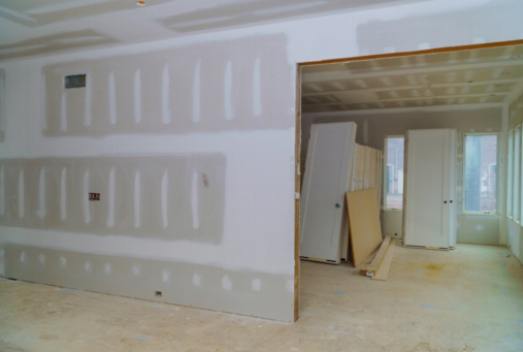Soundproofing Innovation: Drywall Techniques for Modern Living
22 November 2025 by Astrid M.As a human writer and expert in "Drywall, DIY renovations," I have prepared an article that explores the innovative techniques for soundproofing in modern homes. Understanding the science behind sound transmission and implementing effective drywall solutions can significantly enhance living spaces by reducing unwanted noise. By maximizing the effectiveness of installation and exploring additional soundproofing measures and materials, homeowners can create a quieter and more peaceful environment for everyday living.

Understanding Sound Transmission in Homes
Sounds from everyday activities such as conversations, footsteps, or appliances can easily travel through walls, floors, and ceilings, disrupting the peace and privacy of residents. It is important to understand how sound travels in order to effectively address the issue of noise reduction in homes. Sound transmission occurs through vibrations in the air, which travel through solid materials such as walls, ceilings, and floors. These vibrations can bounce off surfaces and continue to travel through the structure of the home, making it difficult to contain and control noise levels. Understanding the pathways that sound can take within a home is crucial in implementing effective soundproofing solutions. Different materials have varying levels of sound resistance, with denser materials typically providing better soundproofing capabilities. Factors such as the thickness of walls and ceilings, the presence of gaps or cracks, and the layout of rooms can all impact the transmission of sound within a home. By identifying potential areas where sound transmission may be occurring, homeowners can better assess the most appropriate soundproofing strategies to employ. In order to effectively reduce sound transmission in homes, it is essential to consider both the airborne and impact noise that may be present. Airborne noise, such as voices or music, travels through the air and can easily pass through walls and ceilings. Impact noise, such as footsteps or doors slamming, is caused by physical contact with surfaces and can also transmit through building materials. By understanding the mechanisms of sound transmission in homes, homeowners can make informed decisions about the most suitable soundproofing solutions for their specific needs. Implementing effective soundproofing techniques can help create a more peaceful and comfortable living environment, free from the disruptions of unwanted noise.Innovative Drywall Solutions for Noise Reduction
Traditional drywall may provide some level of noise reduction, but newer technologies and methods have been developed to greatly enhance this effectiveness. One popular option is the use of sound-dampening drywall, which is specially designed to absorb and block sound transmission. This type of drywall typically features multiple layers of gypsum and viscoelastic materials, such as rubber or vinyl, which help to reduce noise significantly. Another innovative drywall solution is the use of double layers of drywall with an air gap in between. This creates a more effective barrier against sound transmission, as the air gap helps to disrupt the path of sound waves through the wall. For even greater noise reduction, some homeowners may opt for the installation of soundproofing panels or membranes behind the drywall. These materials are designed to further absorb and block sound, making them an excellent choice for particularly noisy environments or rooms. Overall, the use of innovative drywall solutions can greatly enhance the soundproofing capabilities of a home, providing a quieter and more comfortable living environment for homeowners. By investing in these technologies and methods, homeowners can effectively reduce noise transmission and enjoy a more peaceful living space.Maximizing Effectiveness: Installation Tips and Best Practices
Here are some tips and best practices to ensure that your soundproofing project is successful:Ensure Proper Material Selection: When choosing soundproof drywall for your project, make sure to select the right type of drywall for your specific needs. There are different options available, so be sure to do your research and choose the best material for soundproofing.
Seal Gaps and Cracks: Before installing the soundproof drywall, it is crucial to seal any gaps or cracks in the walls to prevent sound leakage. Use acoustic caulk or sealant to fill in any openings and create a tight seal.
Use Multiple Layers: To enhance soundproofing effectiveness, consider using multiple layers of soundproof drywall. Layering the drywall can help absorb and block out more sound, providing added protection against noise transmission.
Pay Attention to Installation Techniques: When installing the soundproof drywall, make sure to follow proper installation techniques to ensure maximum effectiveness. Use the right tools and equipment, and take your time to do the job correctly.
Consider Hiring a Professional: If you are not confident in your DIY skills, or if you have a larger soundproofing project, it may be worth hiring a professional to ensure that the drywall is installed correctly and effectively. By following these installation tips and best practices, you can maximize the effectiveness of your soundproofing project and create a more peaceful and quiet living environment in your home.